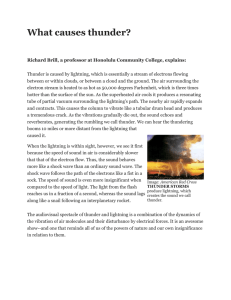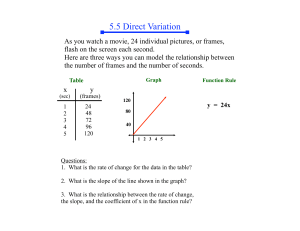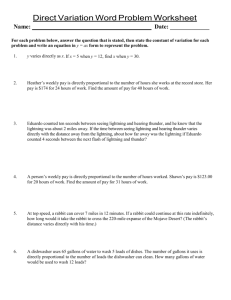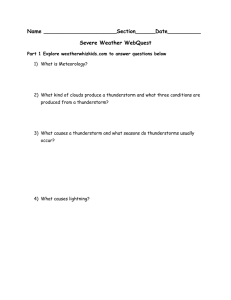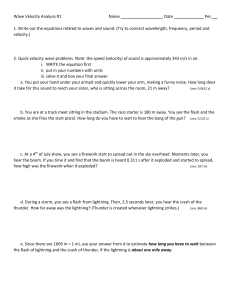Activity 4.5.2 More Direct Variation
advertisement
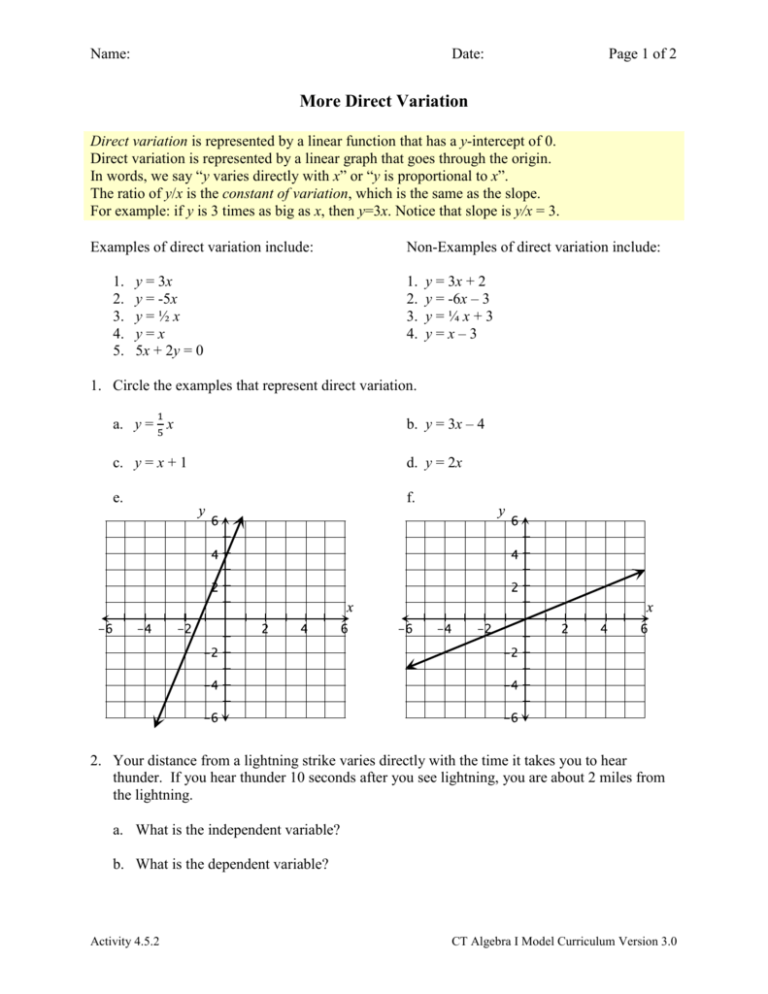
Name: Date: Page 1 of 2 More Direct Variation Direct variation is represented by a linear function that has a y-intercept of 0. Direct variation is represented by a linear graph that goes through the origin. In words, we say “y varies directly with x” or “y is proportional to x”. The ratio of y/x is the constant of variation, which is the same as the slope. For example: if y is 3 times as big as x, then y=3x. Notice that slope is y/x = 3. Examples of direct variation include: 1. 2. 3. 4. 5. y = 3x y = -5x y=½x y=x 5x + 2y = 0 Non-Examples of direct variation include: 1. 2. 3. 4. y = 3x + 2 y = -6x – 3 y=¼x+3 y=x–3 1. Circle the examples that represent direct variation. 1 a. y = 5 x b. y = 3x – 4 c. y = x + 1 d. y = 2x e. f. 2. Your distance from a lightning strike varies directly with the time it takes you to hear thunder. If you hear thunder 10 seconds after you see lightning, you are about 2 miles from the lightning. a. What is the independent variable? b. What is the dependent variable? Activity 4.5.2 CT Algebra I Model Curriculum Version 3.0 Name: Date: Page 2 of 2 c. What is the constant of variation? d. Write an equation for distance as a function of time. e. How many miles away is a lightning bolt if you hear the thunder 5 seconds after you see the lightning? 3. A bicyclist traveled at a constant speed during a timed practice period. Write an equation and find the distance the cyclist traveled in 30 minutes. Elapsed time (minutes) 10 25 Distance (miles) 3 7.5 4. Gasoline is now $3.80 per gallon. Write an equation to model the total cost to put gasoline in a car based on the number of gallons of gasoline purchased. 5. The amount of blood in a person’s body varies directly with body weight. A person who weighs 160 pounds has about 5 quarts of blood. Write an equation to model this situation. Activity 4.5.2 CT Algebra I Model Curriculum Version 3.0



